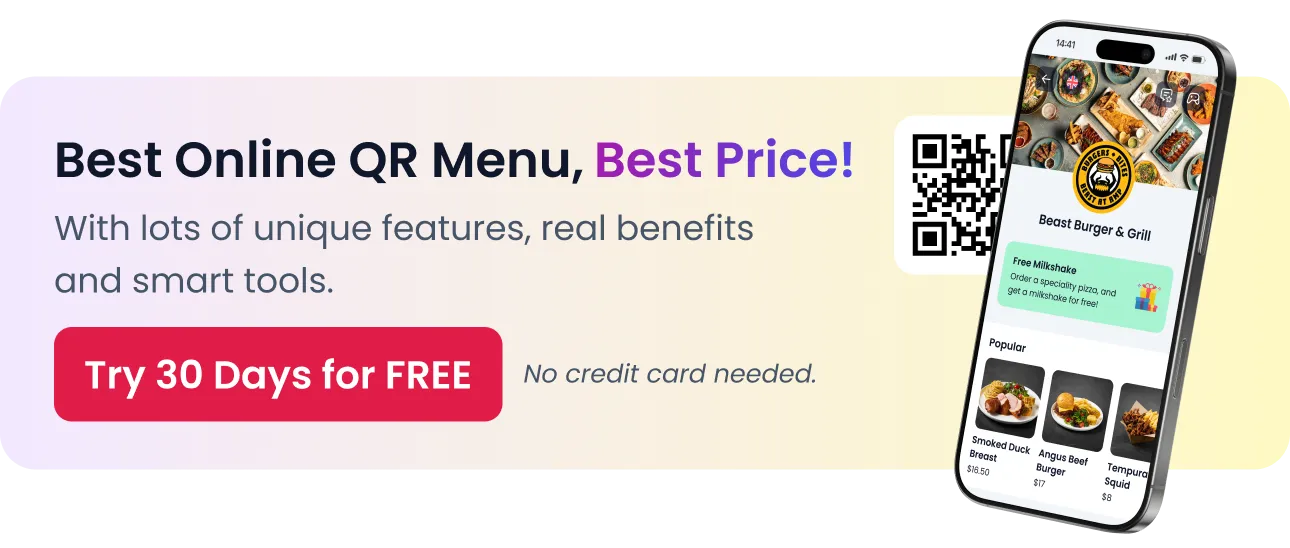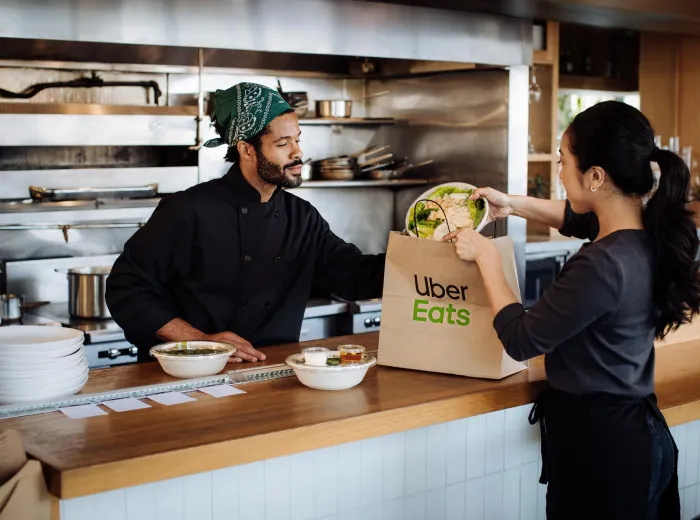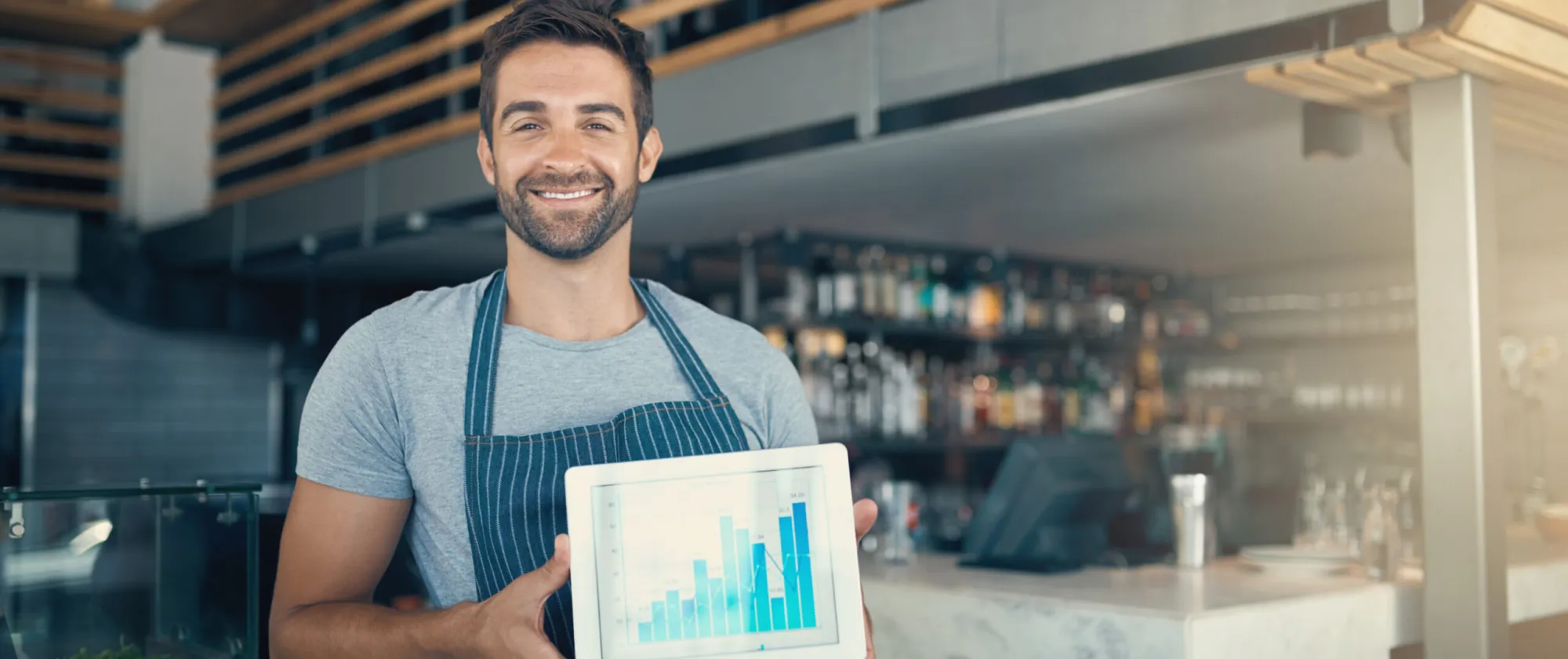
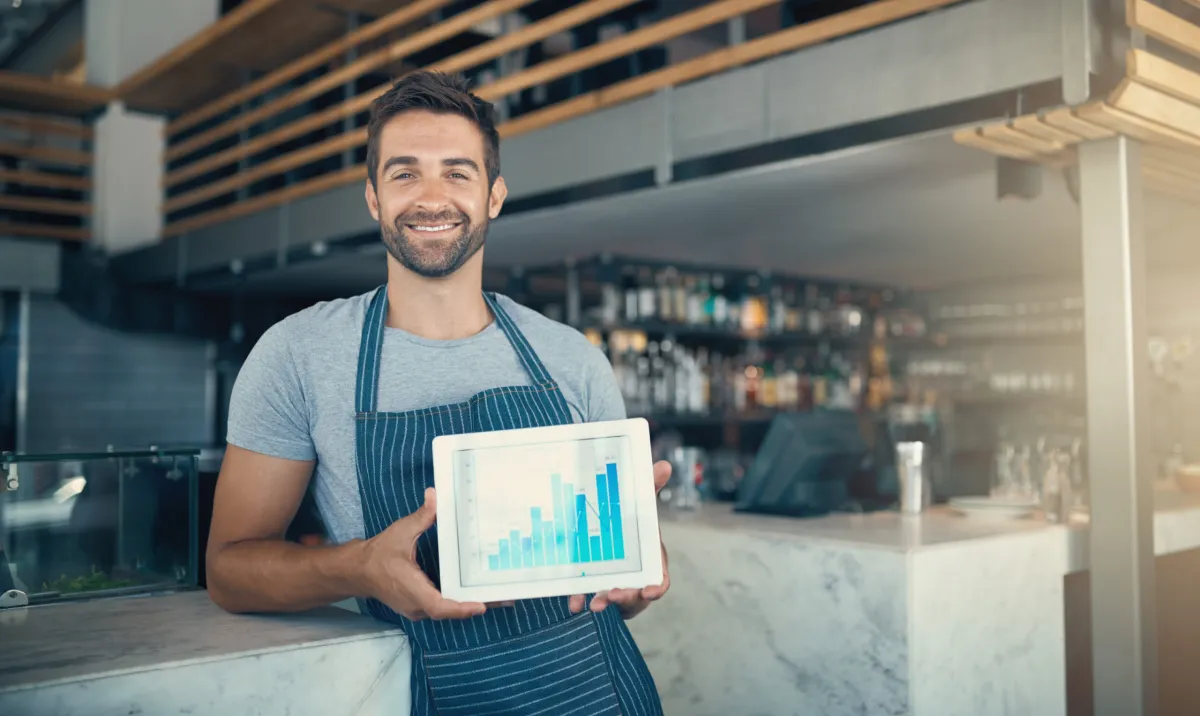
25 Tips to Run a Successful Restaurant in 2025
Running a restaurant in 2025 is both exciting and more challenging than ever. With rapidly evolving customer expectations, new technologies, labor market shifts, and rising operational costs, simply serving great food is no longer enough. Restaurant owners must now be savvy strategists, digital marketers, and hospitality experts all at once.
Whether you’re launching your first venue or managing a seasoned operation, success today requires a solid foundation and the ability to adapt quickly. In this guide, you’ll find 25 actionable, practical tips that touch on every area of restaurant management—from finances and staffing to branding and guest experience. These are not vague suggestions; they are proven strategies used by top-performing restaurants in today’s competitive landscape.
So, if you’re serious about growing a profitable, efficient, and beloved restaurant brand in 2025, keep reading. This guide will help you rethink the way you operate—and give you tools to thrive, not just survive.
Start With a Strong Business Foundation
Every successful restaurant begins with a well-thought-out foundation. Without clarity on your concept, market position, and financial model, even the best chefs and decor won’t save your business. Before diving into operations or marketing, you need to get your core fundamentals right. Here’s how to build that strong base step by step.
Define Your Unique Value Proposition
Your Unique Value Proposition (UVP) is the reason customers choose your restaurant over others. It defines what makes your place different, better, or more appealing in your niche.
Ask yourself:
- What kind of experience do I want my customers to have?
- Am I solving a problem or filling a gap in the market?
- What emotional or functional benefit do I offer?
Your UVP should guide everything from your menu and pricing to interior design and marketing tone. A clear UVP helps align your team, attract the right customers, and create lasting brand loyalty.
Conduct a Market & Competitor Analysis
Understanding your market and competition is key to finding your place in the local dining scene. Don’t guess—research.
Focus on:
- Local demand: What cuisines and concepts are trending in your area?
- Target demographics: Age, income, lifestyle, and dining habits.
- Competitive analysis: Who are your top 5 competitors? What are their strengths and weaknesses?
Use tools like Google Trends, Yelp, TripAdvisor, and foot traffic apps to spot gaps you can fill. A solid analysis reduces the risk of launching a concept that doesn’t resonate with the local community.
Create a Profitable Business Model
Your restaurant may be a passion project, but it must be financially sustainable. A business model helps you determine how you’ll generate revenue and control costs.
Key components include:
- Revenue streams: Dine-in, takeout, delivery, catering, events.
- Pricing strategy: Cost-plus pricing, value-based pricing, or competitive pricing.
- Cost structure: Break down your fixed and variable costs.
By outlining your revenue and expense patterns clearly, you’ll be better equipped to forecast profits, plan for growth, and survive market fluctuations.
Build a Scalable Restaurant Business Plan
A business plan is your roadmap. It gives you direction and shows investors or partners that you mean business. A good plan is not just a document for funding—it’s a decision-making tool.
Your plan should include:
- Executive summary
- Concept and branding
- Market and competition research
- Organizational structure
- Menu and pricing overview
- Marketing plan
- Operational workflow
- Financial projections
Keep it dynamic—review and adjust it at least once a year. A strong business plan keeps you aligned with your goals and makes scaling up easier when the time comes.
Know the Financials Inside and Out
Many restaurants fail not because of bad food or poor service, but due to weak financial management. In 2025, with tighter margins and higher costs, understanding your numbers is more critical than ever. Mastering your finances isn’t just about bookkeeping—it’s about making data-driven decisions that protect profitability and long-term sustainability.
Set Up Smart Cost Control Systems
Effective cost control starts with visibility. You need systems that allow you to track, analyze, and reduce unnecessary expenses without compromising quality.
Key areas to monitor:
- Food costs: Use inventory tracking to reduce spoilage and over-ordering.
- Labor costs: Forecast scheduling based on sales patterns.
- Utility and overhead costs: Monitor energy use and renegotiate service contracts annually.
Use digital tools like restaurant management software, POS integrations, and cloud-based accounting to gain real-time insights. This proactive approach helps you spot cost leaks early and correct them before they impact your bottom line.
How to Calculate Food & Labor Cost Percentages
Two of your biggest expenses—food and labor—can make or break your profit margin. Understanding how to calculate these ratios will help you stay in control.
Formulas:
- Food Cost % = (Cost of Goods Sold ÷ Food Sales) x 100
- Labor Cost % = (Total Labor Cost ÷ Total Sales) x 100
Ideal benchmarks:
- Food Cost: 25%–35% (depending on your concept)
- Labor Cost: 20%–30%
Track these weekly, not just monthly. If you notice a spike, investigate immediately—whether it’s due to vendor price changes, waste, or inefficient scheduling.
Use POS and Accounting Software Effectively
Your Point of Sale (POS) and accounting tools should be working for you, not just recording transactions. Choose systems that integrate and automate your reporting.
Look for:
- Daily sales reports
- Inventory tracking
- Labor cost reports
- Profit & loss summaries
- Sales forecasting features
Top integrations like Toast, Square, Xero, and QuickBooks Online can streamline your entire back-office process, reduce human error, and save hours of manual data entry each week.
Understand Your Break-Even Point
Your break-even point is the sales volume you need to cover all your expenses before making a profit. If you don’t know this number, you’re essentially flying blind.
Break-Even Formula: Break-Even Sales = Fixed Costs ÷ (1 – Variable Cost %)
For example:
- Fixed monthly costs = $20,000
- Variable costs = 60% of sales
- Break-even = $20,000 ÷ (1 – 0.60) = $50,000 in monthly sales
Knowing this figure helps you:
- Set realistic sales targets
- Adjust pricing strategies
- Plan promotional campaigns with clear revenue goals
Choose the Right Staff and Train Them Well
Your team is the face, voice, and energy of your restaurant. In 2025, finding and keeping the right staff is one of the biggest challenges in the hospitality industry—but it’s also one of the most crucial keys to long-term success. Investing in the right people and giving them the tools to grow will pay off in better service, stronger team morale, and higher customer retention.
Hire for Attitude, Train for Skill
Skills can be taught—but attitude, work ethic, and team compatibility are harder to coach. Focus your hiring on soft skills like:
- Positivity and patience
- Strong communication
- Adaptability under pressure
- Team collaboration
Use behavior-based interview questions and role-play exercises to identify personality fit. Prioritize people who genuinely care about hospitality and are eager to learn, even if they’re new to the industry.
Onboarding & Training Processes that Stick
A structured onboarding program helps new hires get up to speed quickly and reduces early turnover. Training should go beyond technical tasks—it should immerse staff in your culture, values, and expectations.
Effective onboarding includes:
- A clear orientation schedule (first week is key)
- Standardized training checklists by role
- Shadow shifts with experienced staff
- Written materials or digital handbooks
Use bite-sized training videos or digital tools to make learning engaging and repeatable. Employees should know exactly what success looks like in their role from day one.
Retain Staff with Fair Pay and Culture
Hiring is expensive. Retention is where real value lies. Staff stay where they feel respected, challenged, and part of something bigger.
Retention strategies include:
- Competitive and transparent compensation
- Clear career paths and skill development
- Consistent recognition for hard work
- Open communication with managers
Even small perks like free staff meals, performance bonuses, or flexible scheduling can create loyalty. A strong team culture will keep turnover low and morale high.
Create a Team That Delivers Consistent Service
Consistency is what builds your reputation. Whether it’s a Monday lunch or a Saturday dinner rush, guests should receive the same level of quality and service. That starts with clear standards and ongoing coaching.
Tactics to maintain consistency:
- Weekly team meetings or huddles
- Secret shopper or peer evaluation programs
- SOP (Standard Operating Procedures) for every role
- Real-time feedback and corrective coaching
Train your managers to lead by example. A well-trained and motivated team won’t just follow rules—they’ll take pride in delivering exceptional service every shift.
Create a Menu That Sells and Scales
Your menu is more than a list of dishes—it’s your business strategy in action. The right menu boosts profit margins, streamlines kitchen operations, and shapes how guests perceive your brand. In 2025, with rising food costs and changing dietary preferences, designing a menu that both sells and scales is vital for sustained success.
What is Menu Engineering and Why It Matters?
Menu engineering is the process of analyzing and optimizing menu items based on profitability and popularity. It’s one of the most powerful tools you can use to increase average ticket size and overall margin—without raising prices across the board.
Key components:
- Categorize items as Stars, Plow Horses, Puzzles, or Dogs
- Promote high-margin, high-selling dishes with visual cues
- Rework or remove low-performing items
Use your POS data to track what’s selling and how much each dish actually costs you. Menu engineering should be a quarterly practice, not a one-time task.
How to Price Menu Items for Profit
Pricing isn’t just about covering costs—it’s about understanding perceived value and strategic pricing psychology.
Pricing tips:
- Aim for a food cost percentage of 25–35% per item
- Use psychological pricing (e.g., $12.95 instead of $13)
- Anchor higher-ticket items near mid-priced ones to boost perceived value
- Bundle items into profitable combos or meal deals
Also, factor in delivery app commissions, inflation trends, and competitor pricing. Dynamic pricing models are becoming more common—consider testing them during peak and off-peak times.
Reduce Menu Size to Improve Efficiency
A smaller, focused menu doesn’t just save on food costs—it improves service speed, reduces waste, and increases quality consistency.
Benefits of menu downsizing:
- Faster prep times and smoother kitchen flow
- Easier inventory management
- Less staff training required
- Increased ability to highlight signature items
Use sales reports to identify your lowest-performing dishes, and phase them out. Aim for a “hero menu” with 20–30 high-performing items that reflect your brand and customer preferences.
Include Allergen & Dietary Info with Menuviel
Transparency around allergens and dietary options is no longer optional—it’s expected. Providing clear labels increases trust, improves customer satisfaction, and reduces liability risks.
With tools like Menuviel, you can:
- Add visual badges for vegetarian, vegan, gluten-free, halal, dairy-free, and nut-free items
- Update allergen info in real time without reprinting menus
- Empower staff to answer questions with confidence
- Comply with local food safety regulations more easily
These small touches make a big difference in guest loyalty, especially among health-conscious and food-sensitive customers.
Deliver Outstanding Guest Experiences
In today’s competitive restaurant landscape, great food alone isn’t enough. What keeps guests coming back is the experience—the emotional connection they form with your brand from the moment they walk in to the moment they leave. In 2025, delivering consistent, personalized, and memorable guest experiences is one of the best ways to build customer loyalty and drive long-term success.
Personalize the Customer Journey
Customers expect more than just a meal—they want to feel seen, valued, and remembered. Personalization enhances their overall experience and increases their likelihood of returning.
Ways to personalize:
- Address repeat customers by name
- Remember past orders or preferences through your POS or CRM
- Offer birthday perks or loyalty program rewards
- Segment your email or SMS marketing based on customer behavior
Use tools like reservation systems, digital ordering platforms, and loyalty software to track guest data. A tailored experience makes every visit feel special—and worth sharing.
Handle Complaints Like a Pro
Even the best restaurants receive complaints—it’s how you handle them that defines your reputation. A smooth recovery can turn an unhappy guest into a loyal advocate.
Complaint resolution tips:
- Train staff to listen without interrupting
- Show empathy and take responsibility, even if the issue seems minor
- Offer a solution immediately (refund, free item, or future discount)
- Follow up later if possible, especially with high-value guests
Empower your frontline staff to resolve issues on the spot. Quick, respectful action builds trust and shows you value your guests’ feedback.
Measure Customer Satisfaction Regularly
If you’re not measuring guest satisfaction, you’re guessing. Feedback helps you understand what’s working and where you need to improve—before problems grow.
Tools to gather feedback:
- Table-side digital surveys with QR codes
- Follow-up emails after reservations or orders
- Monitoring reviews on platforms like Google, Yelp, and TripAdvisor
- Anonymous mystery diner programs
Track key metrics like:
- Net Promoter Score (NPS)
- Average star ratings
- Number of positive vs. negative reviews
- Common complaint themes
Use this data to refine your service processes, staff training, and even menu offerings. Informed improvement leads to better guest experiences—and better business results.
Embrace Technology for Efficiency
In 2025, technology is not just a trend—it’s a necessity. From streamlining operations to improving customer service and cutting costs, the right tools can transform how your restaurant runs. Embracing smart, scalable tech solutions will help you operate more efficiently, reduce errors, and stay competitive in a rapidly evolving market.
Use Online Reservations and Ordering Systems
Online booking and ordering platforms have become essential for convenience and guest satisfaction. Customers expect a seamless digital experience before they even walk through your doors.
Benefits include:
- Reducing wait times and improving table turnover
- Allowing guests to customize orders in advance
- Collecting customer data for future marketing
- Reducing manual errors and miscommunication
Popular tools: OpenTable, Resy, SevenRooms for reservations; and Square, Toast, or Menuviel for online ordering and digital menus. Integrate these into your POS for real-time updates and smoother workflows.
Should Restaurants Use QR Code Menus?
QR code menus surged during the pandemic—and they’re still relevant in 2025. They’re not only hygienic and cost-effective, but also highly flexible for menu updates and dynamic pricing.
Advantages of QR code menus:
- Instantly update menu items or pricing without reprinting
- Include photos, allergen icons, and item descriptions
- Offer upsell prompts and suggest pairings
- Reduce contact and paper waste
However, don’t make them your only option. Always provide printed menus or tablets for guests who prefer traditional formats, especially older or less tech-savvy diners.
Automate Inventory and Staff Scheduling
Inventory and staffing can make or break your profitability—but automation tools make it easier to stay in control without constant manual work.
Smart tools for inventory management:
- Real-time ingredient tracking
- Automated reorder alerts based on par levels
- Integration with POS for usage data
Popular options: MarketMan, BlueCart, and xtraCHEF
Smart tools for staff scheduling:
- Drag-and-drop shift builders
- Forecasting based on sales data
- Mobile apps for staff communication and time-off requests
Popular options: 7shifts, Homebase, Deputy
By automating routine tasks, you reduce human error, save time, and allow your management team to focus on higher-value activities like customer service and team coaching.
Stay Ahead with Data and Analytics
In 2025, the most successful restaurants aren’t just creative—they’re data-driven. From tracking sales trends to understanding guest behaviors, data allows you to make smarter, faster, and more profitable decisions. With the right analytics, you can identify what’s working, fix what’s not, and uncover growth opportunities before your competitors do.
Use Dashboards to Monitor Daily KPIs
Your Key Performance Indicators (KPIs) are the pulse of your restaurant. Having a centralized dashboard helps you stay on top of operations in real time and react to issues quickly.
Essential KPIs to track daily:
- Daily sales and average ticket size
- Labor cost % and food cost %
- Table turnover rate
- Number of guests served
- Online vs. in-store orders
Modern POS systems like Toast, Square, or Lightspeed often include customizable dashboards. With this bird’s-eye view, you can spot patterns early—whether it’s a slowdown in lunch traffic or a dip in staff productivity.
Leverage Guest Data to Make Better Decisions
Your customers are constantly giving you feedback—through reviews, preferences, order history, and behavior. Use that data to craft targeted promotions, menu changes, and loyalty rewards.
Tactics to apply guest data:
- Identify top customers and offer them exclusive perks
- Customize promotions based on order history (e.g., “We miss you” emails)
- Track menu preferences by season, time, and demographic
- Optimize marketing campaigns using CRM segmentation
By analyzing guest behavior, you’ll stop guessing and start giving people exactly what they want—at the right time and through the right channels.
How to Use Heatmaps and Dwell Time Analytics
For restaurants with larger spaces or fast-casual formats, spatial analytics can be a goldmine of insight. Heatmaps and dwell time tools show how customers move through your space and where they linger.
What you can learn:
- Which tables or zones get used the most (or least)
- Where to place signage, specials, or upsell prompts
- How long guests are staying—and how that affects table turnover
- If your layout is causing bottlenecks or delays
Tools like Zenreach, RetailNext, or even some advanced POS systems offer this level of insight. Small layout changes based on these findings can significantly improve flow and customer satisfaction.
Build a Memorable Restaurant Brand
Your restaurant brand is more than a logo—it’s the emotional connection people have with your business. In 2025, standing out requires more than good food. You need a strong, consistent identity that reflects your values, attracts your ideal customers, and sticks in their minds long after they’ve left. A well-built brand creates trust, drives loyalty, and gives your marketing real power.
Choose a Name, Logo, and Story That Stick
Your name and logo are your first impression. They should be unique, easy to remember, and meaningful. But more than visuals, your brand story adds the personality behind your concept.
What to focus on:
- A name that reflects your cuisine, vibe, or values
- A clean, modern logo that works on menus, signs, and screens
- A compelling origin story—why you started, what inspires your food, and what guests can expect
Include your story on your website, social media, and even on your menu. People don’t just buy food—they buy into stories they can relate to.
Keep Your Branding Consistent Across Channels
Brand consistency builds credibility. Whether a guest is looking at your Instagram or standing at your host stand, the experience should feel cohesive.
Key areas to align:
- Fonts, colors, and tone of voice
- Staff uniforms and decor style
- Social media posts, ads, and printed materials
- Menu design and packaging
Create a simple brand style guide to share with your team and partners. This ensures everyone—from your graphic designer to your bartender—represents your brand the same way, everywhere.
Develop a Signature Dish or Experience
Want people to talk about your restaurant? Give them something remarkable to remember—and share. A signature dish or unique experience can become the center of your brand identity.
Examples:
- A signature cocktail served in an unexpected glass
- A tableside preparation that adds a wow factor
- A dish that’s photogenic, craveable, and exclusive to your restaurant
- A memorable customer ritual (e.g., a birthday chant, surprise dessert, etc.)
This “signature” becomes your marketing hook, helps guests recognize your brand, and gives them a reason to return (and bring friends).
Optimize Marketing Online and Offline
Marketing is no longer just about running ads or printing flyers. In 2025, a successful restaurant must have a blended marketing strategy—one that connects with guests both online and offline, drives traffic, and builds long-term loyalty. The goal is to be present wherever your customers are looking, whether it’s on Google Maps or strolling past your front window.
Build a Mobile-Responsive Website
Your website is your digital storefront, and it often makes the first impression—especially for new customers searching online.
Your site should include:
- A mobile-friendly design (over 70% of searches happen on phones)
- Clear navigation and fast loading times
- Online reservations and ordering integration
- Updated menu with dietary badges and prices
- Location, hours, contact info, and social media links
Use SEO best practices: optimize title tags, meta descriptions, and headings for keywords like “best [cuisine] restaurant in [city].” Google favors websites that are fast, secure, and helpful.
How to Grow With Local SEO in 2025
Local SEO is the key to showing up when someone searches “restaurants near me.” Ranking high on Google Maps and local search results drives real foot traffic.
Local SEO tactics:
- Claim and optimize your Google Business Profile
- Add high-quality photos, business categories, and a keyword-rich description
- Encourage and respond to customer reviews regularly
- List your business on relevant local directories (TripAdvisor, Yelp, Foursquare)
- Use location-based keywords throughout your site and blog content
Remember: Google uses proximity, relevance, and reputation to rank local businesses—so keep your listings accurate and updated.
Use Social Media to Build Loyalty
Social media isn’t just about pretty pictures—it’s about building a community around your restaurant. Use it to engage, inform, and entertain your followers while reinforcing your brand personality.
What to post:
- Behind-the-scenes content (chef prepping, staff stories)
- New menu items or seasonal specials
- Guest shoutouts and user-generated content
- Time-limited offers or events
- Polls, Q&As, and interactive stories
Platforms like Instagram, TikTok, and Facebook are ideal for restaurants. Use scheduling tools like Later or Buffer to stay consistent, and track performance using insights and analytics.
Print and In-Store Promotions That Work
While digital dominates, offline marketing is still powerful—especially when used creatively and strategically.
Effective offline tactics:
- Table tents or check inserts for promoting loyalty programs or events
- Local partnerships with gyms, theaters, or hotels for mutual promotions
- Window signage that highlights daily specials or unique offerings
- Flyers or coupons distributed in nearby residential areas or office buildings
- Branded packaging for takeout orders to increase visibility
Make sure your offline efforts match your online message and visuals. When done right, offline marketing creates touchpoints that feel personal and memorable.
Launch a High-Converting Loyalty Program
In 2025, customer retention is just as important—if not more—than customer acquisition. A well-designed loyalty program doesn’t just bring guests back more often—it turns them into brand advocates. The best programs are easy to join, fun to use, and deliver meaningful rewards that make guests feel appreciated. If you’re not using one yet, you’re leaving money on the table.
What Type of Loyalty Program is Right for You?
There’s no one-size-fits-all solution. The best loyalty program depends on your restaurant concept, customer base, and business goals.
Popular types include:
- Points-based programs: Guests earn points for every dollar spent (great for casual dining, coffee shops, QSRs)
- Punch cards: Simple “Buy 9, Get 1 Free” style (ideal for cafes, bakeries, juice bars)
- Tiered rewards: Higher spenders unlock better perks (great for full-service restaurants)
- Subscription-based loyalty: Pay monthly for exclusive benefits (popular for upscale dining or membership clubs)
Keep it simple and transparent. Guests should always know how to earn and redeem rewards—confusion kills engagement.
How to Promote Your Loyalty Program
Even the best loyalty program won’t work if guests don’t know about it. You need a promotion strategy to get people to sign up and start using it consistently.
Ways to promote your program:
- Promote it at the point of sale with cashier prompts
- Add signage on tables, menus, and takeout packaging
- Use a QR code that links directly to sign-up or app download
- Send email/SMS reminders with current point balances and reward milestones
- Offer a welcome bonus or free item for first-time members
Train your team to introduce the program as part of the service experience. Make it feel like an exclusive club, not a sales pitch.
Use Digital Tools to Automate Reward Systems
Manual punch cards are fading fast. In 2025, the best loyalty programs are digital, automated, and integrated with your POS and CRM.
Recommended digital tools:
- Square Loyalty
- Thanx
- Lightspeed Loyalty
- Toast Loyalty
Features to look for:
- Auto-tracking of points/spending
- Reward notifications via SMS or app
- Birthday offers or time-sensitive promos
- Integration with your email marketing
Automating your program reduces errors, improves tracking, and makes it easier to scale. Most importantly, it gives you data you can use to refine your offerings and target your best customers more effectively.
Keep Operations Smooth and Profitable
No matter how great your food or branding is, your restaurant’s success hinges on operational efficiency. In 2025, smooth day-to-day operations are critical to controlling costs, reducing stress, and maintaining consistency across every shift. With tight margins and high guest expectations, your goal should be to create streamlined workflows that boost productivity and profitability.
Daily, Weekly & Monthly Checklists for Managers
Checklists are a simple but powerful tool to standardize tasks, reduce human error, and keep the entire team accountable. They also make training easier and ensure consistency across shifts and locations.
Key checklist types:
- Daily: Opening & closing procedures, cash handling, kitchen prep, sanitation
- Weekly: Inventory audits, deep cleaning, menu item performance reviews
- Monthly: Staff evaluations, vendor contract reviews, equipment maintenance
Use digital checklist apps like Jolt or 7shifts to track task completion in real time and assign accountability. Checklists reduce guesswork and help managers focus on high-impact activities.
How to Optimize Front of House Operations
Your front of house (FoH) is where hospitality comes to life. Optimizing FoH processes ensures better guest flow, faster service, and a more enjoyable atmosphere.
FoH optimization tips:
- Use a reservation or waitlist system to manage traffic
- Train hosts and servers in table zoning for faster seating and rotation
- Implement mobile ordering or handheld POS systems for quicker checkouts
- Standardize greeting and service scripts to reduce inconsistencies
- Keep menus, restrooms, and dining areas spotless—guests notice the details
Empower your floor managers to monitor guest experience in real-time and adjust staff roles based on traffic flow throughout the day.
Back of House Organization Tips That Work
Behind every smooth service is a well-run kitchen. Your back of house (BoH) should be organized like a production line—with clear roles, efficient prep systems, and tight communication.
BoH best practices:
- Follow mise en place religiously—prep ingredients before service begins
- Use labeled storage bins and FIFO (First In, First Out) inventory systems
- Minimize station overlap to reduce chaos during peak hours
- Invest in durable, ergonomic equipment to speed up prep and reduce injuries
- Conduct daily pre-shift BoH meetings to clarify specials, prep needs, and expectations
When your kitchen is well-organized, ticket times drop, food consistency improves, and your team works with less stress—leading to happier guests and better reviews.
Adapt to Trends Without Losing Identity
In the fast-moving world of food and hospitality, staying relevant means adapting to new trends—but doing so in a way that stays true to your brand. In 2025, diners are looking for more than just great food; they want sustainable practices, inclusive menus, and digital convenience. The challenge is to evolve while protecting your restaurant’s unique identity.
Add Plant-Based and Health-Conscious Options
Customers are becoming more health-conscious and environmentally aware, leading to a surge in demand for plant-based, low-carb, gluten-free, and allergen-friendly dishes.
How to adapt without overhauling your menu:
- Add a few standout plant-based or vegetarian entrées
- Offer customizable dishes (e.g., grain bowls, salads, wraps)
- Highlight health-conscious swaps (e.g., cauliflower crust, dairy-free cheese)
- Use Menuviel to clearly mark dishes with dietary/allergen badges
You don’t need to go fully vegan—just offering a few smart options shows your guests that you’re paying attention to their evolving needs.
Partner with Delivery Apps — Wisely
Delivery is here to stay, but platform fees can eat into your margins. In 2025, the smartest restaurants are finding a balance between using third-party apps and growing their own direct channels.
Tips to maximize delivery profitability:
- Limit delivery menu to high-margin, travel-friendly items
- Use branded packaging to maintain your visual identity
- Set a higher pricing tier for third-party platforms to offset commissions
- Encourage direct orders via your website or app with discounts or loyalty perks
- Monitor delivery ratings and reviews as closely as dine-in feedback
Apps like Uber Eats, DoorDash, and Talabat provide reach—but make sure you own the customer relationship wherever possible.
Stay Compliant with Local Sustainability Laws
Sustainability isn’t just a trend—it’s becoming regulation. Many cities and countries are implementing laws around food waste, composting, and eco-friendly packaging.
Sustainability compliance checklist:
- Switch to compostable or recyclable containers for takeout and delivery
- Reduce single-use plastics like straws and cutlery
- Implement food waste tracking to minimize over-prep
- Partner with local suppliers to reduce carbon footprint
- Stay updated on local environmental regulations and incentives
These changes don’t just satisfy legal requirements—they also improve your reputation among conscious consumers and can even reduce long-term operating costs.
Build Community and Get Local Support
Restaurants thrive when they’re more than just places to eat—they become part of the community fabric. In 2025, local support matters more than ever, especially as consumers lean toward neighborhood spots that reflect their values and give back. Building strong ties with your community not only drives repeat business, but also creates a loyal fan base that markets your brand for you.
Collaborate with Local Farms and Suppliers
Partnering with local vendors isn’t just a trend—it’s a strategic advantage. It strengthens your local economy, shortens your supply chain, and gives you access to fresher, seasonal ingredients.
Benefits of sourcing locally:
- Higher food quality and flavor
- Reduced transportation costs and emissions
- Storytelling opportunities for your menu (e.g., “Locally sourced from XYZ Farm”)
- Stronger vendor relationships and reliability
Promote your local partnerships on social media, menus, and signage to show guests your commitment to the community and sustainability.
How to Host Events to Attract Locals
Hosting events gives people a reason to visit beyond the food. It also positions your restaurant as a social hub, boosting word-of-mouth and generating off-peak traffic.
Event ideas:
- Local artist nights or live music
- Wine tastings, cooking classes, or mixology workshops
- “Meet the Farmer” or supplier showcase dinners
- Fundraisers for local schools, shelters, or nonprofits
- Seasonal pop-ups or themed brunches
Promote events through flyers, community boards, and local media—along with digital channels like Eventbrite, Facebook, and your email list.
Use Cause Marketing to Build Brand Affinity
Today’s customers want to support businesses that stand for something. Aligning with causes that reflect your values can deepen emotional loyalty and build goodwill.
Examples of cause marketing:
- Donate a portion of proceeds to a local food bank or animal shelter
- Offer a “Pay It Forward” meal option
- Sponsor youth sports teams or community gardens
- Run campaigns around mental health, sustainability, or food insecurity
Make your efforts transparent and authentic. When done right, cause marketing shows your brand has purpose—and gives people a meaningful reason to support you.
Always Be Improving
The most successful restaurants in 2025 aren’t the ones that stay the same—they’re the ones that continuously evolve. Guest preferences shift, technologies advance, and new competitors emerge. To stay ahead, you need a mindset of constant improvement across every area of your business. That means listening, learning, and adjusting regularly—not just when something goes wrong.
Track Feedback, Reviews, and Surveys
Your customers are your best source of insight. Regularly collecting and analyzing their feedback helps you catch problems early and spot new opportunities.
Ways to gather feedback:
- In-store surveys via QR code
- Post-visit email or SMS surveys
- Monitoring online reviews (Google, Yelp, TripAdvisor)
- Social media comments and messages
Focus on common themes rather than one-off complaints. Use tools like ReviewTrackers or Feed It Back to aggregate and analyze feedback across platforms. Respond professionally and promptly—it shows that you value guest input and are committed to growth.
Stay Updated with Industry News
Trends move fast in hospitality. Staying informed helps you adapt early, instead of playing catch-up. Dedicate time weekly or monthly to scan what’s happening in the industry.
Where to stay informed:
- Subscribe to restaurant industry newsletters (e.g., Restaurant Dive, QSR Magazine, Nation’s Restaurant News)
- Follow food trends on platforms like Instagram, TikTok, and Pinterest
- Join restaurant Facebook groups or Reddit communities
- Attend webinars, expos, or local industry events
Being in the know keeps your menu, service, and marketing fresh and relevant.
Reinvest in Growth — Not Just Survival
Too many restaurants operate in survival mode, barely covering costs. But growth requires smart reinvestment—not just in decor or new equipment, but in people, processes, and systems.
Reinvestment ideas:
- Upgrade POS or kitchen tech to improve efficiency
- Invest in staff training, leadership development, or wellness programs
- Refresh branding, signage, or your digital presence
- Launch new revenue streams (merchandise, catering, online classes)
Set aside a portion of your monthly profit for reinvestment. Even small upgrades—when done consistently—lead to long-term growth, stronger operations, and a healthier business.
Key Takeaways
Running a successful restaurant in 2025 requires more than passion—it demands strategy, adaptability, and a deep understanding of every aspect of your business. Here are the most important lessons from this guide:
- Build a strong foundation: Start with a clear concept, well-researched business plan, and profitable model.
- Know your numbers: Track food, labor, and operating costs closely to maintain healthy margins.
- Hire and train intentionally: Your team shapes the guest experience—invest in them accordingly.
- Design a smart menu: Use menu engineering and pricing strategies to boost sales and efficiency.
- Prioritize guest experience: Personalization, service recovery, and feedback loops are key to retention.
- Leverage technology: From POS to QR menus and scheduling software, tech helps streamline everything.
- Use data to grow: Monitor performance metrics, analyze customer behavior, and adapt in real time.
- Craft a strong brand: Tell your story, create signature experiences, and stay visually consistent.
- Market smartly: Combine SEO, social media, and in-store promotions to attract and retain customers.
- Launch a loyalty program: Reward regulars and encourage repeat visits with easy-to-use digital tools.
- Optimize operations: Use checklists, workflows, and systems to keep both front and back of house running smoothly.
- Adapt to trends with purpose: Embrace change without losing what makes your restaurant unique.
- Engage your community: Build local connections through events, partnerships, and shared values.
- Keep improving: Stay curious, collect feedback, and reinvest in your growth constantly.
No matter where you are in your restaurant journey, these strategies will help you stay competitive, efficient, and loved by your customers in the year ahead.
Frequently Asked Questions About Running a Successful Restaurant
If you’re looking to improve the daily operations and long-term success of your restaurant, you’re not alone. Many restaurant owners have similar questions about what it takes to boost profitability, retain loyal customers, and stand out in a competitive industry. Below are answers to some of the most common questions restaurant owners search for online.
What are the key elements that make a restaurant successful?
Successful restaurants usually focus on four core pillars: consistent food quality, excellent customer service, effective marketing, and strong financial management. Without balancing all four, long-term sustainability becomes difficult.
How can I increase customer retention at my restaurant?
You can boost customer retention by offering loyalty programs, gathering regular feedback, maintaining high service standards, and using customer data to personalize offers and communication.
What marketing strategies work best for small restaurants?
For small restaurants, local SEO, Google Business Profile optimization, engaging social media content, partnerships with food delivery apps, and email campaigns can yield strong returns without breaking the budget.
How do I improve my restaurant’s profit margins?
Start by controlling food and labor costs, reducing waste, using inventory software, offering upsells and combos, and engineering your menu to highlight high-margin items.
What are the most common mistakes new restaurant owners make?
Common mistakes include underestimating startup costs, choosing a poor location, ignoring digital marketing, failing to train staff properly, and not tracking financial performance regularly.
ABOUT THE AUTHOR
Erkin Coban
Your Customers Deserve The Best
And we got Menuviel for them.
The fastest and easy-to-use online QR menu with 12+ unique features. Choose Menuviel and elevate your service quality to the next level.
Use free for the first 30 days.
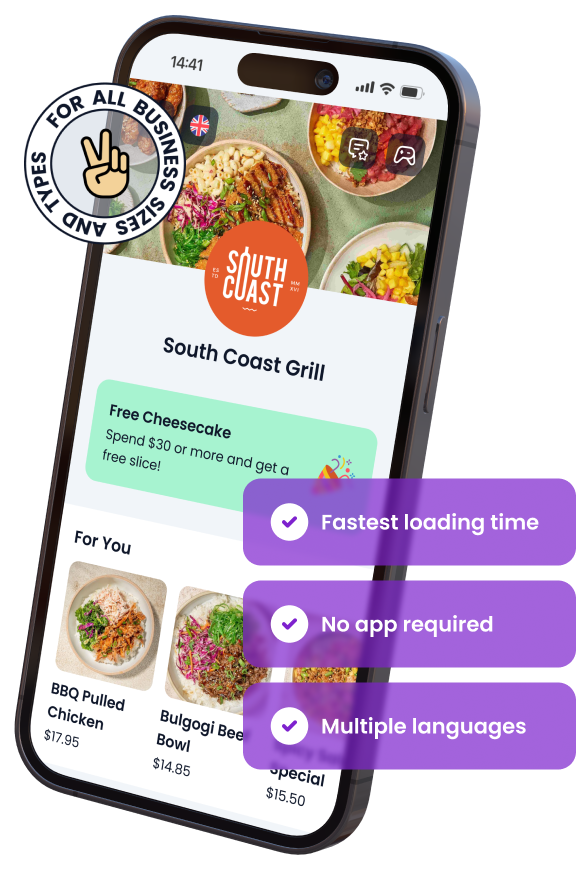
In This Article

Free AI Tools for Restaurants
TRY NOW ➜
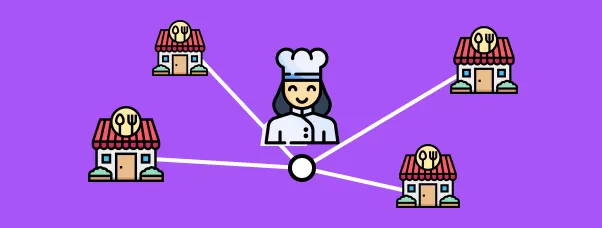
Manage all your places from a single point
Easily create and manage menu items from a single point, ensuring consistency across all your locations.


